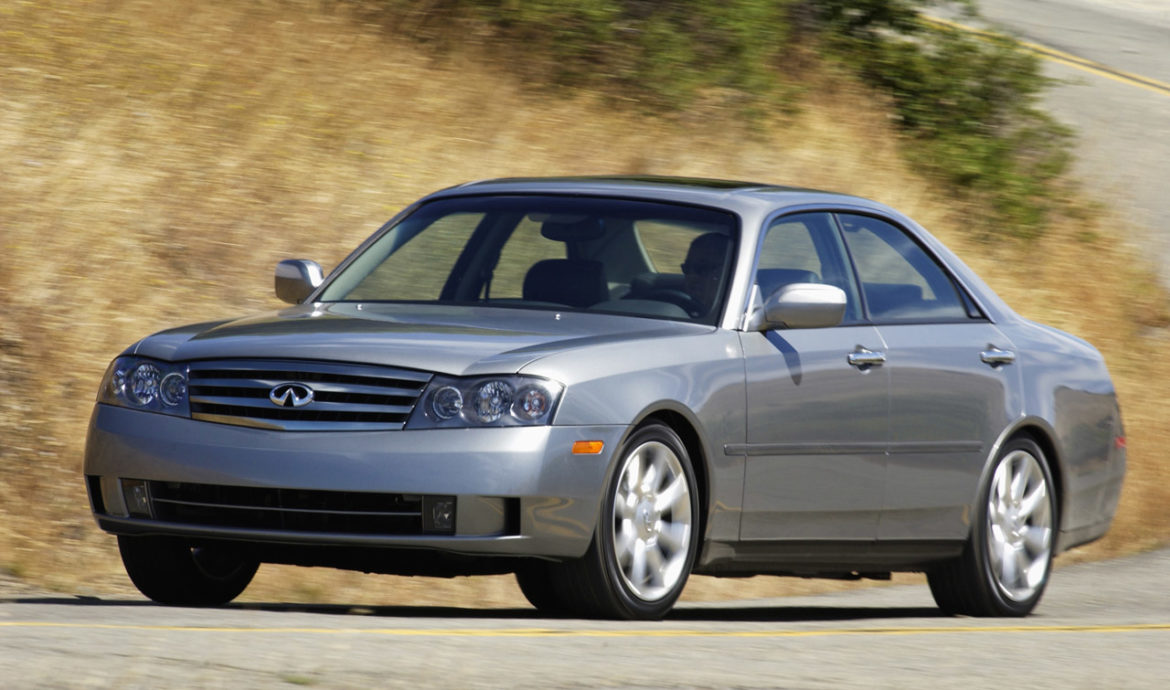Infiniti wasn’t known for much at the close out of the 1990s. Most of their cars looked like marked up Nissans with chrome grilles and a few pseudo-luxury touches. Competitors like Acura put in an honest effort to dress up some of their offerings compared to their parent brand Honda. Nissan on the other hand, failed to do as such with their Infiniti flagship, the Q45. Nissan was losing to their competitors in the Japanese luxury import game, which oddly mimics the modern-day Infiniti. Their cars were boring and unsporty, their marketing was confusing, and no one bought their cars.
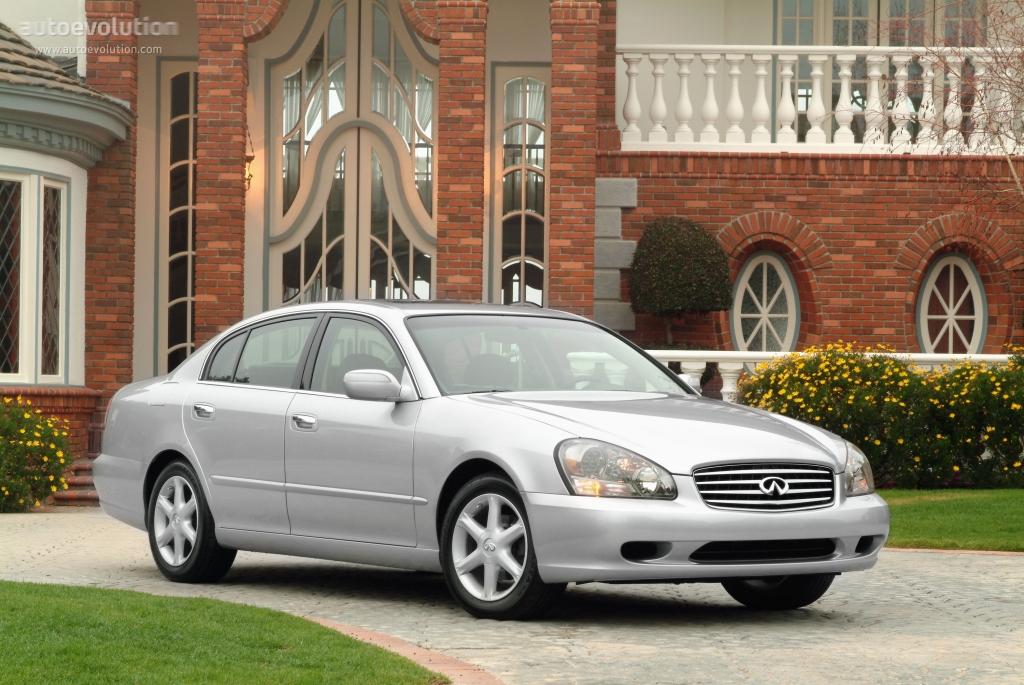
The year 2000 came and went without a single fulfillment referenced in Prince’s apocalyptic song “1999.” When movies referenced the new millennium, they show a world filled with robots and futuristic cars, but what we got was a bunch of car companies “playing it safe and boring.” But Nissan executives decided on a subtle but bold move to freshen their line-up; take an already JDM successful executive car, and Americanize it for U.S. Market.
Toted as the intelligent muscle car in advertisements; the M45 was a Nissan Cedric with a V8 wedged between the frame rails. The power plant was the Nissan-built, DOHC, 32-valve, 4.5L V8 that was good for 340 horses and 333 ft lbs of torque. The M45 filled the mid-size segment with the power and performance of the flagship Q45, in a smaller, lighter package, rocking a best in class 0-60mph of 5.7 seconds. This was coming at a time when Nissan ended the life of its R34 Skyline, which is considered to be the beginning of the Nissans decline in the performance car market.
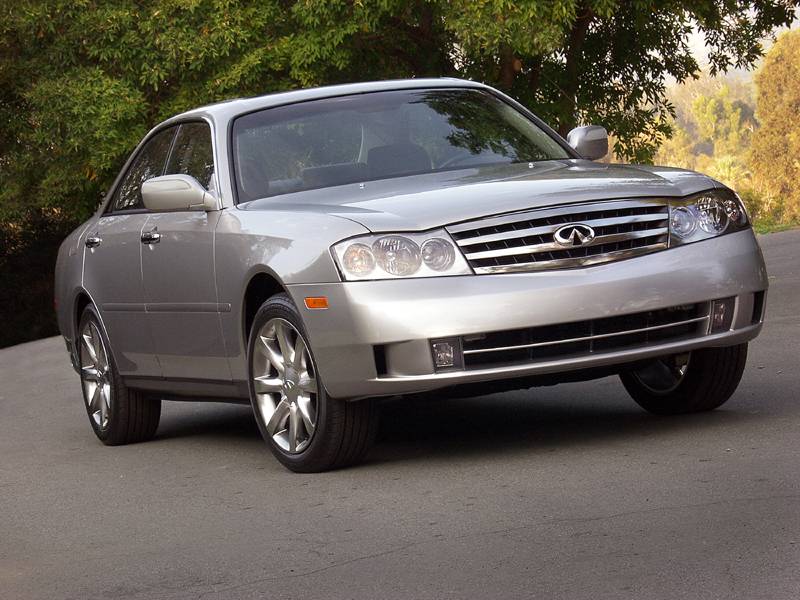
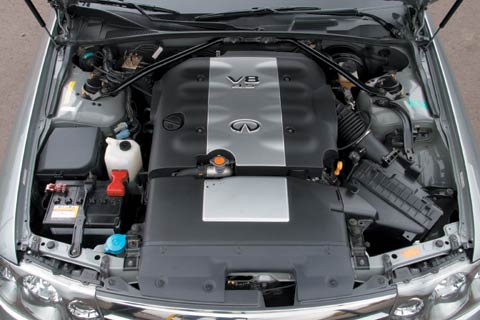
In the US, the M45 looked like nothing else on the road. The JDM re-badged sedan was longer and narrower than the rest of the generic sedans in the US. The proportions gave the M45 a slick and fast appearance when it drove by you on the road. The wheels came stock at 18” filling the wheel arches more impressively than its rivals. The pinched edges and corners tied with the smooth surfaces of every side made it unique amongst its JDM rivals or USDM counterparts. A polarizing design that was at home in Tokyo, but alien in New York.
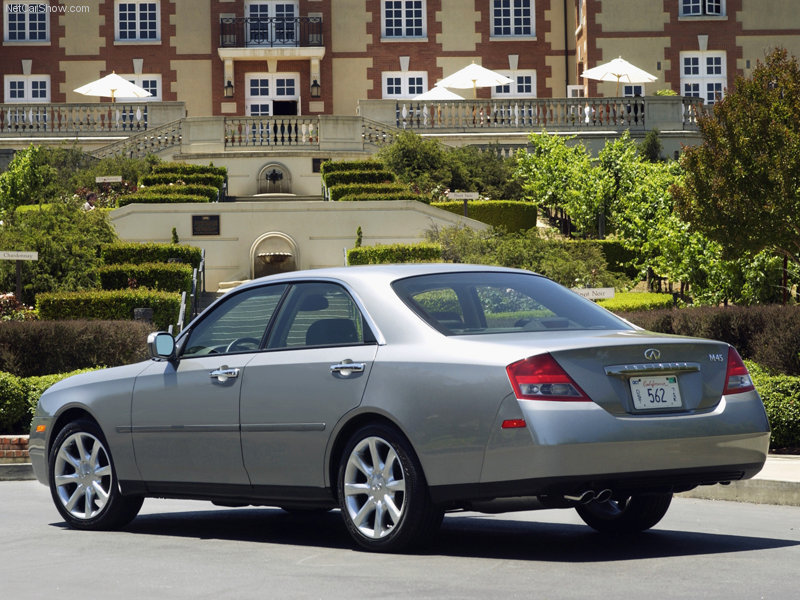
The M45 was loaded with features that are commonplace now; Xenon headlights, laser-guided cruise control, speed-sensitive steering, heated and cooled seats, and a (now dated) infotainment screen in the center stack. All of these things in 2003 and 2004. An impressive offering that spoke “luxury” and truly proposed a new image for the brand; a unique looking car, standard with modern features, power to back up the street credibility, and at a lower price than its competitors.
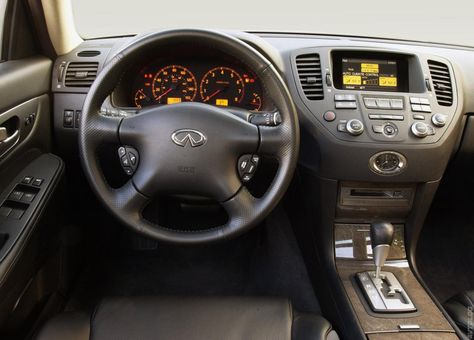
Unfortunately, it wasn’t as successful as Infiniti had hoped. Slightly over 8,000 units were sold in the US from 2003-2004. Due to poor sales, the first gen M45 sadly only lasted two short years. Critics say the design was too polarizing, some say infiniti hadn’t quite broken free of its “yawn” reputation. At the time it was a hard sell “This sports sedan is better than your BMW 5-series” when they didn’t have the historical clout to back it up, especially from a Japanese brand.
In 2005, the M45 kept its engine, but completely changed appearance to the normal, bland sweeping lines of the mid-2000 infiniti line-up. Despite the generic redesign, the second generation M45 became immensely popular, and kept the Infiniti brand afloat along with its crossover and SUV models.
Fortunately, that means the 1st generation cars are affordable, albeit hard to find due to their low sales numbers. An added benefit is the sleeper effect these cars have; many owners don’t know what they have when it comes to performance. A craigslist scan shows well taken care of examples are going for $5k or less, the tricky part is finding one that hasn’t been wrung out and put away wet.


